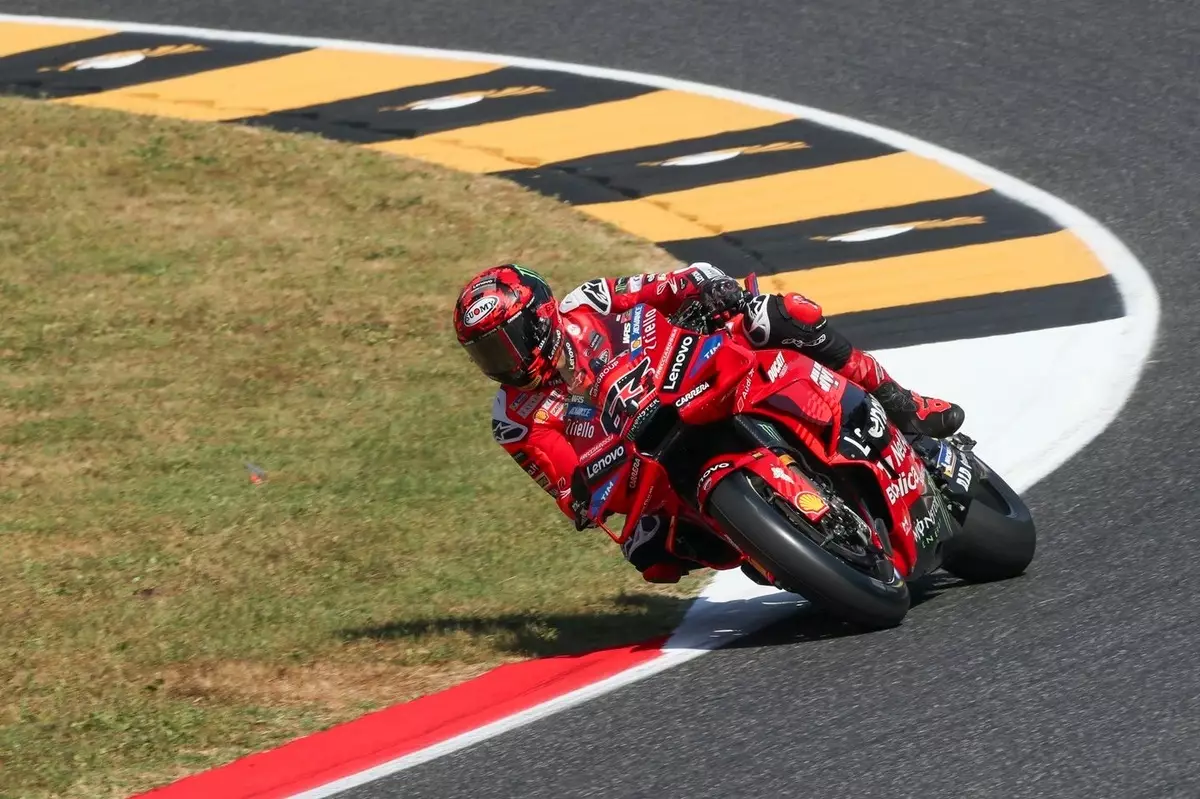In the high-stakes environment of MotoGP, where precision and performance are paramount, the debate surrounding braking technology is more relevant than ever. As riders and teams gear up for the Italian Grand Prix at Mugello, the spotlight has shifted to brake specifications, particularly in light of Francesco Bagnaia’s recent experiments with disc sizes. While the allure of larger brake discs promises enhanced stopping power and better feel, it is crucial to consider the complex trade-offs that accompany this change.
Francesco Bagnaia made headlines at the Aragon circuit, where he switched from a 340mm to a 355mm brake disc during a crucial session. This move sparked a flurry of discussions about the efficacy of larger discs across various tracks. What many fail to recognize is that the benefits are not universally applicable. Increased braking performance does not come for free; it invites challenges such as added weight, which can compromise overall performance and agility on the bike.
Understanding Track-Specific Challenges
As Andrea Pellegrini from Brembo illustrated, Mugello presents a unique set of conditions that diverge significantly from the energy-intensive demands observed at Aragon. Unlike the higher energy levels required at Aragon, riders at Mugello need to focus on a balanced approach to braking, where controlling temperature becomes critical. While Bagnaia currently utilizes standard 340mm discs, contemplating a move to larger discs could result in mechanical problems due to increased weight.
The physics behind braking in MotoGP is not just about stopping a bike quickly but involves a delicate balance of handling, temperature management, and rider sensitivity to these variables. Pellegrini’s comments underscore how essential it is for riders to maintain optimal brake temperatures to achieve the necessary stopping power. The added burden of larger brake discs—and possibly additional components needed to warm them up—creates a nuanced dilemma, one that riders must navigate with finesse.
The Sensitivity of Temperature Control
Temperature control on braking components may seem like a technical detail, but for riders, it is often the difference between victory and defeat. A brake disc that’s too cool can lead to compromised performance—less stopping power when it’s needed most. This makes the adaptation of temperature covers, while effective, an additional consideration of excess weight. Therefore, teams and riders not only have to weigh the benefits of increased brake size but the implications on their overall strategy and bike performance.
Moreover, the dialogue on brake systems illustrates a broader theme within MotoGP: the constant pursuit of optimization. Teams need to be astute and adaptable, able to swiftly respond to the nuances of different circuits while using advanced materials and techniques to enhance performance without sacrificing control. No two tracks are alike, and the relationship between lap time, handling, and braking becomes an intricate dance of engineering and rider skill.
In skepticism of larger discs as a panacea, it becomes clear that the future of MotoGP braking technology relies on an intelligent blend of innovations. Finding that optimal setup will continue to be a dominant focus as riders like Bagnaia and their teams strive for championship glory—one turn at a time.


Leave a Reply